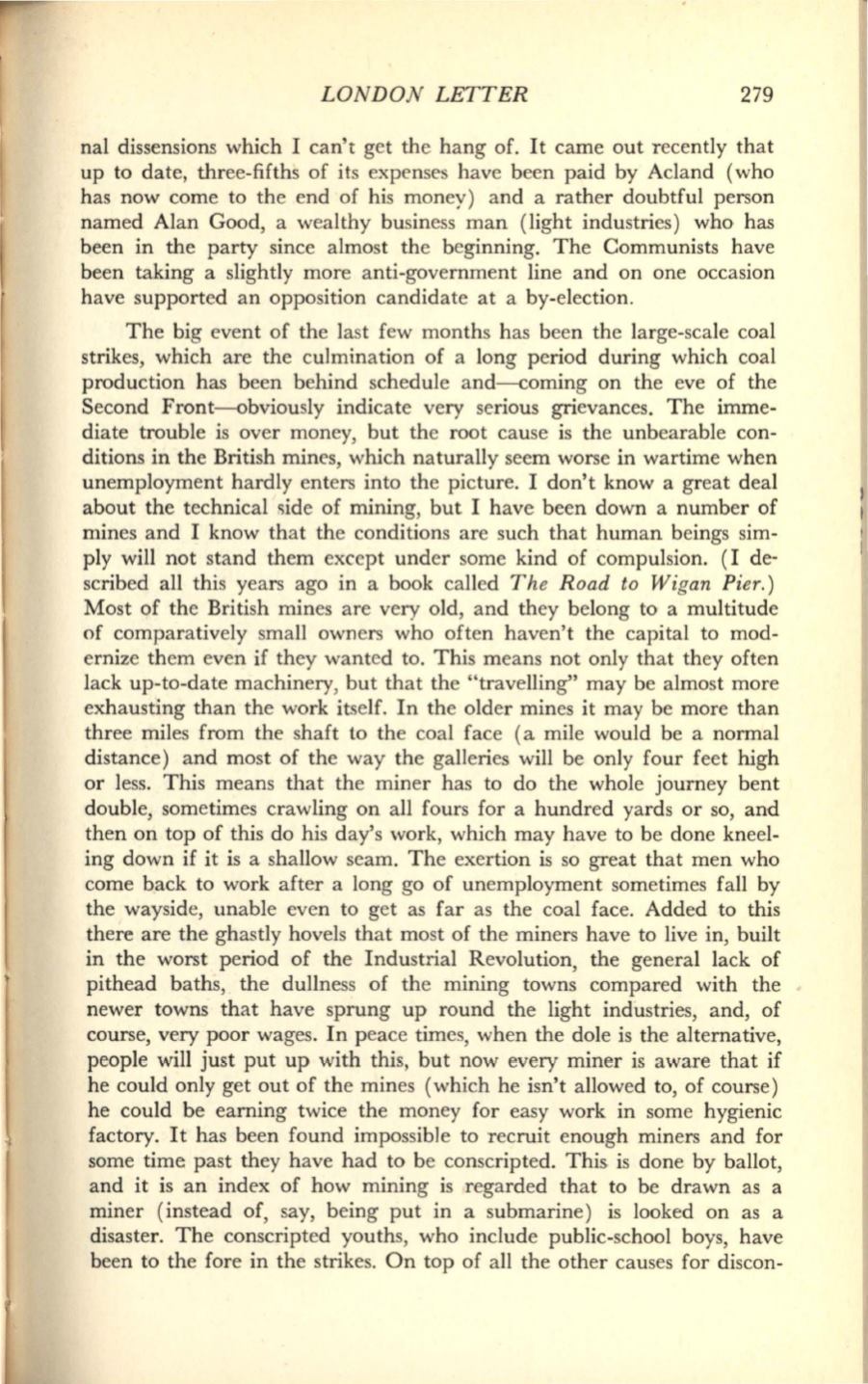
LONDON LETTER
279
nal dissensions which I can't get the hang of. It came out recently that
up to date, three-fifths of its expenses have been paid by Acland (who
has now come to the end of his money) and a rather doubtful person
named Alan Good, a wealthy business man (light industries) who has
been in the party since almost the beginning. The Communists have
been taking a slightly more anti-government line and on one occasion
have supported an opposition candidate at a by-election.
The big event of the last few months has been the large-scale coal
strikes, which are the culmination of a long period during which coal
production has been behind schedule and-coming on the eve of the
Second Front-obviously indicate very serious grievances. The imme–
diate trouble is over money, but the root cause is the unbearable con–
ditions in the British mines, which naturally seem worse in wartime when
unemployment hardly enters into the picture. I don't know a great deal
about the technical side of mining, but I have been down a number of
mines and I know that the conditions are such that human beings sim–
ply will not stand them except under some kind of compulsion. (I de–
scribed all this years ago in a book called
The Road to Wigan Pier.)
Most of the British mines are very old, and they belong to a multitude
of comparatively small owners who often haven't the capital to mod–
ernize them even if they wanted to. This means not only that they often
lack up-to-date machinery, but that the "travelling" may be almost more
exhausting than the work itself. In the older mines it may be more than
three miles from the shaft to the coal face (a mile would be a normal
distance) and most of the way the galleries will be only four feet high
or less. This means that the miner has to do the whole journey bent
double, sometimes crawling on all fours for a hundred yards or so, and
then on top of this do his day's work, which may have to be done kneel–
ing down if it is a shallow seam. The exertion is so great that men who
come back to work after a long go of unemployment sometimes fall by
the wayside, unable even to get as far as the coal face. Added to this
there are the ghastly hovels that most of the miners have to live in, built
in the worst period of the Industrial Revolution, the general lack of
pithead baths, the dullness of the mining towns compared with the
newer towns that have sprung up round the light industries, and, of
course, very poor wages. In peace times, when the dole is the alternative,
people will just put up with this, but now every miner is aware that if
he could only get out of the mines (which he isn't allowed to, of course)
he could be earning twice the money for easy work in some hygienic
factory. It has been found impossible to recruit enough miners and for
some time past they have had to be conscripted. This is done by ballot,
and it is an index of how mining is regarded that to be drawn as a
miner (instead of, say, being put in a submarine) is looked on as a
disaster. The conscripted youths, who include public-school boys, have
been to the fore in the strikes. On top of all the other causes for discon-


